Shopping for a gaming monitor can be overwhelming, especially with so many specs, brands, and price points to consider. That’s why we’ve created this straightforward guide: a no-frills, no-guesswork list of the best gaming monitors you can buy at each major price point, starting at $100 and going all the way up to $1,000 (and beyond).
Usually in our best monitor recommendation guides we provide multiple options based on different criteria like screen resolution, refresh rate, monitor size, and pricing, but that won’t be the case today. This article focuses on simplicity. If you just want to know what the best monitor is for your budget without wading through endless specs and reviews, this is for you (this is our second year/edition!).
These recommendations are based on extensive hands-on testing. Nearly every monitor on this list has been put through its paces by us, with full reviews available here at TechSpot or on the Hardware Unboxed channel. Of course, monitor prices can fluctuate, so if you’re reading this weeks or months after publication, some things may have changed. Let’s now dive in and find the perfect gaming monitor for your budget.
TL;DR
$100
AOC 24G4 (or equivalent 1080p)
This year, we’re back to starting this guide at $100 because that’s the sort of price point where 1080p monitors need to sit. To be fair, it’s actually a little difficult to find a 1080p 144Hz gaming monitor – or better – for just $100. Most models we’ve seen start at either $110 or $120. So we’re going to sneak in one of the few 1080p monitors we’ve tested recently: the AOC 24G4, which can sometimes be found for as low as $120.
The 24G4 is a 24-inch 1080p 180Hz IPS LCD that delivers decent performance at an entry-level price. It’s slightly better than its predecessors, with a wide color gamut, height-adjustable stand, respectable motion performance, and excellent factory calibration. It’s a reliable 1080p display that sticks to the basics and performs well overall. If you can grab one near $120, you’ve done pretty well.
$150
Asrock PG27QFT2A
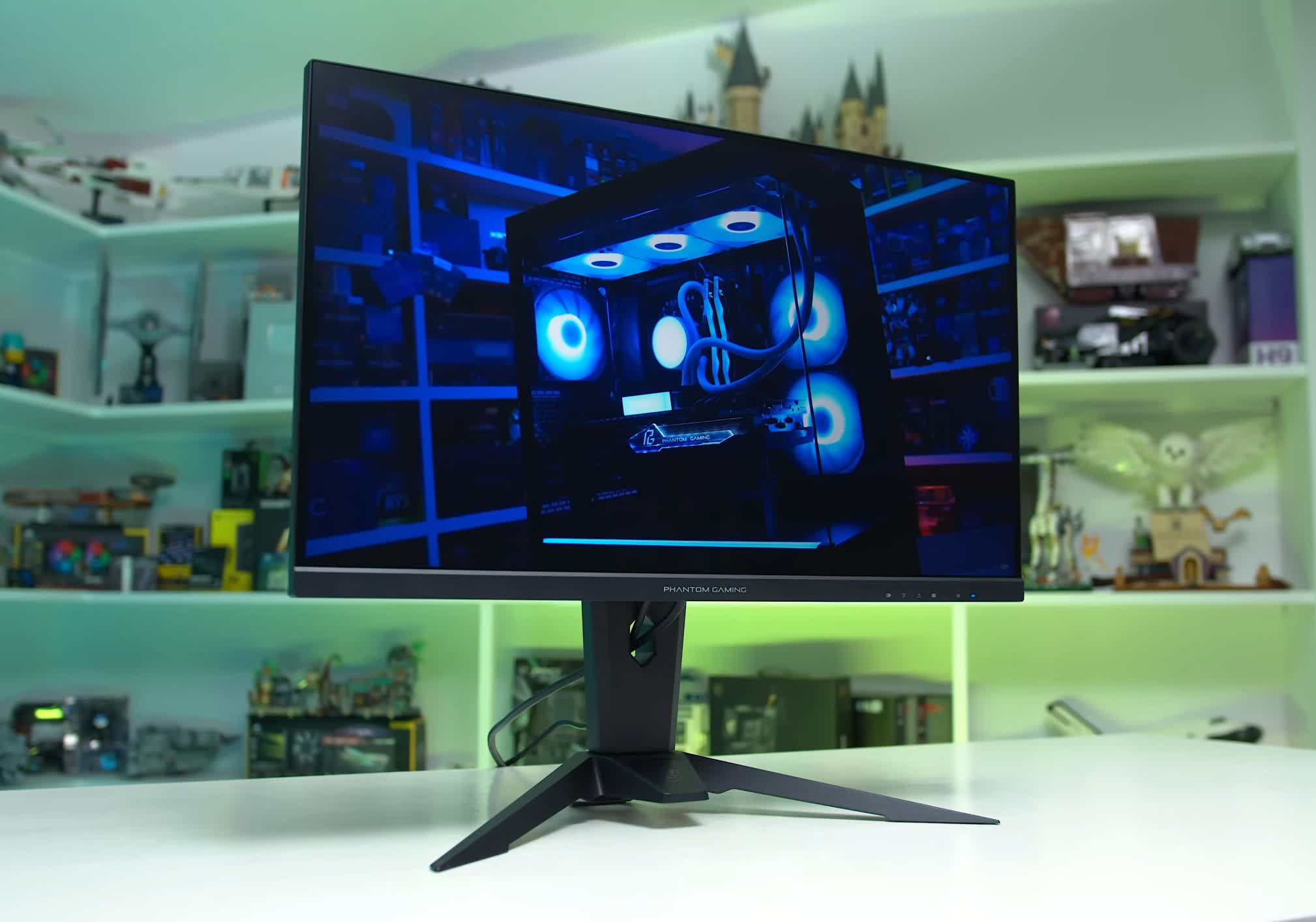
We’ve been surprised to see 1440p monitors reach as low as $150 this year, and at this price, we’re recommending the Asrock PG27QFT2A. When testing this monitor, we were impressed with how reasonable it was for the cost, with no deal-breaking flaws typically expected from dirt-cheap products. It’s a 27-inch 1440p 180Hz IPS LCD, offering a noticeable step up from other entry-level monitors due to its higher 1440p resolution.
The strengths of this product include its wide viewing angles and lack of dark-level smearing, both advantages over VA LCDs, along with its low input lag, lack of flickering, and great contrast ratio for an IPS. Unfortunately, its response time performance isn’t the best, which is expected in the budget tier, and there’s minimal factory calibration. However, we still find it very usable for gaming, and it isn’t as poorly tuned as budget LCDs from a few years ago. At such a low price, it gets our approval.
$200
Dell G2724D
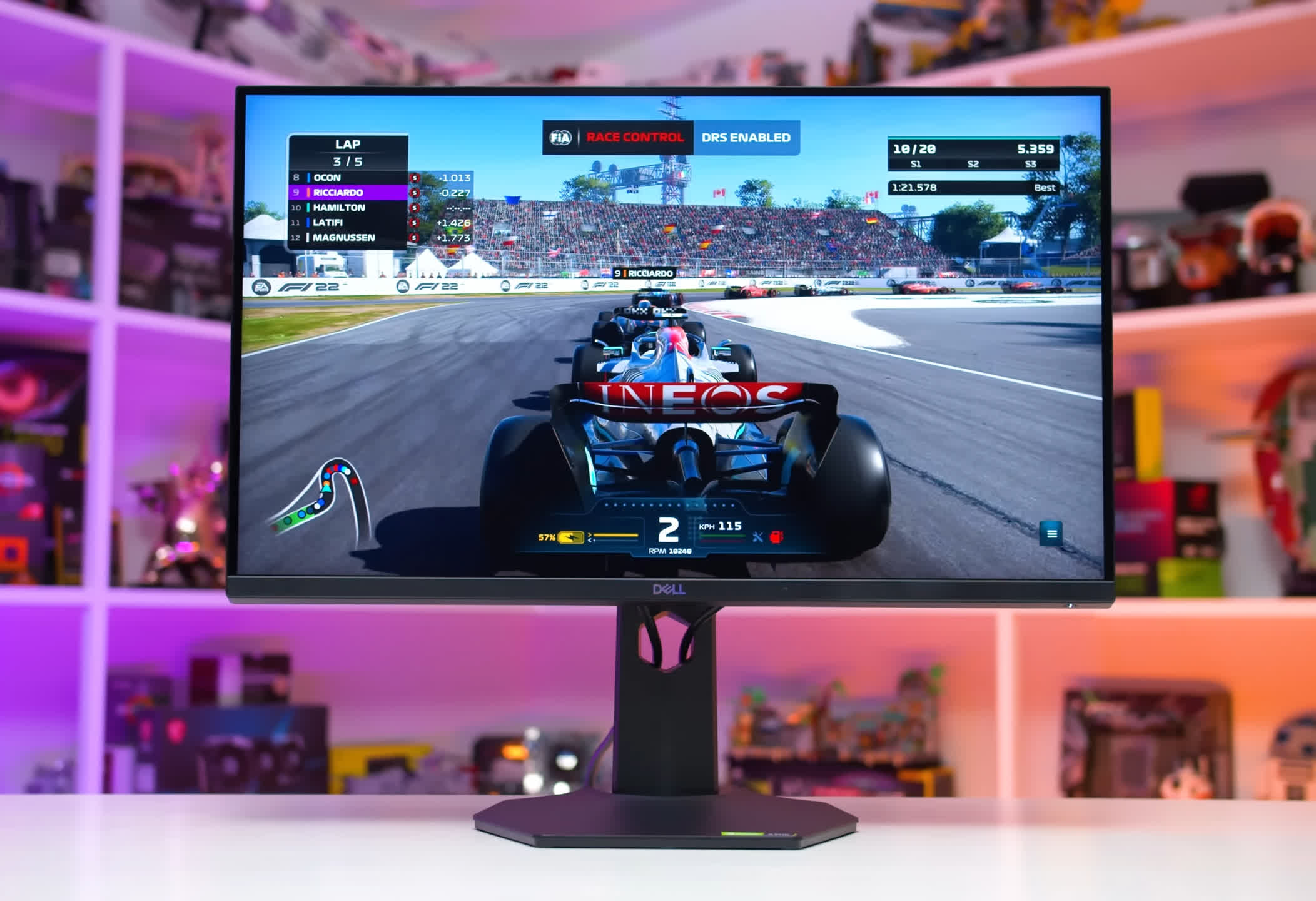
At around $200, we’re recommending the Dell G2724D. This monitor outperforms the Asrock model in most areas, making it a worthwhile upgrade if you have a bit more to spend. It’s a 27-inch 1440p 165Hz IPS LCD that you can typically find for between $180 and $200, with performance in several areas matching higher-end 1440p monitors, like its decent response times and well-calibrated sRGB mode.
This monitor is a significant upgrade over older IPS or VA monitors due to its lack of dark smearing, faster response times, better viewing angles, and pleasing color experience. Its contrast ratio isn’t too bad, and it has high brightness. This is a well-balanced monitor at this price point. We think it’s a perfect entry point for 1440p gaming or a great choice for upgrading from older monitors.
$250
LG 27GP850
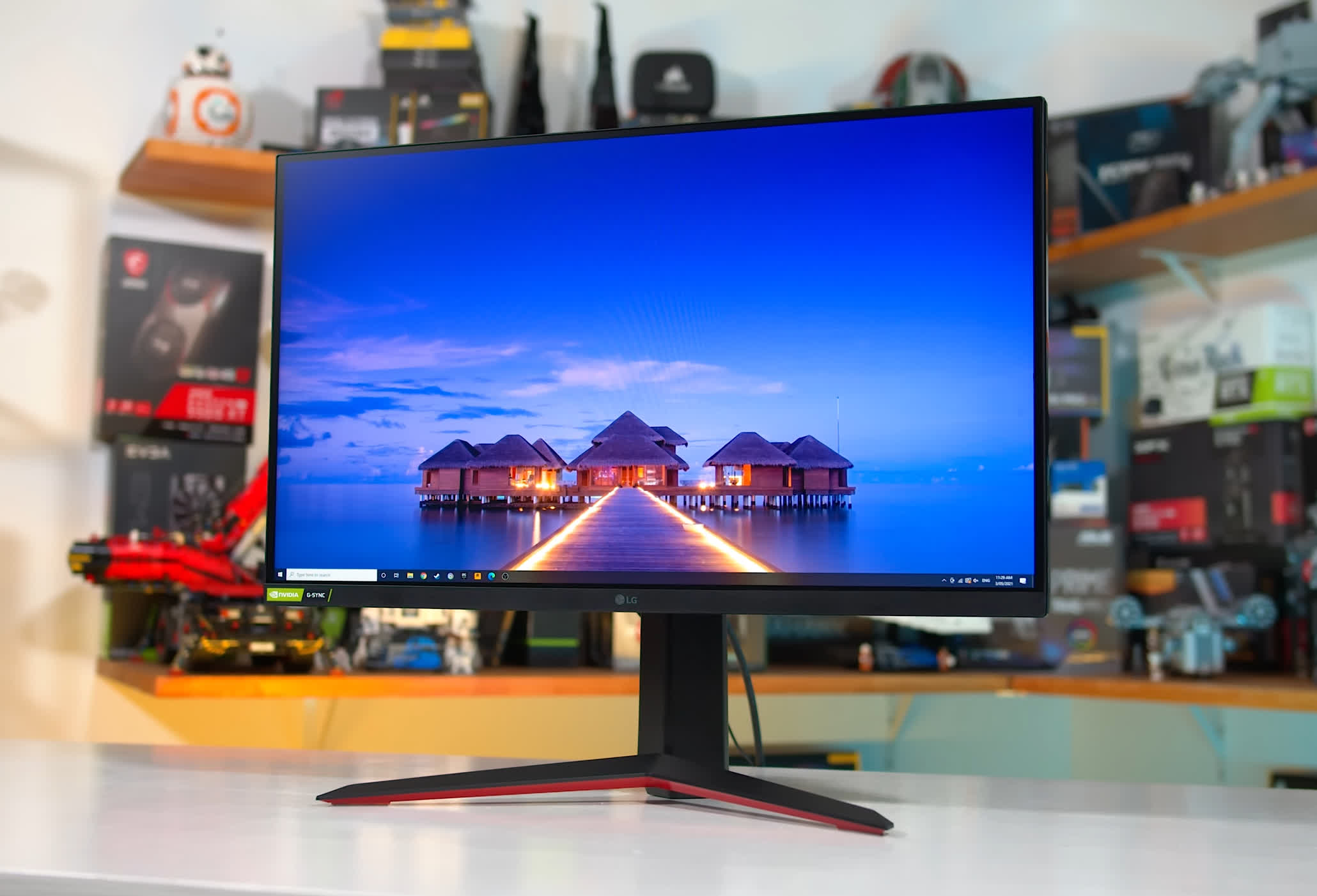
At $250, we’re not in love with most options, as monitors in this range tend to be only minor upgrades over those closer to $200. However, if we had to recommend something, it would probably be the LG 27GP850, which you can often find for closer to $230 on a good day. There are also several other similar LG models that could be considered alternatives to the 27GP850.
The 27GP850 stands out in two key areas compared to the G2724D, making it worth considering. First, it offers a much wider color gamut, providing near-full coverage of DCI-P3 or a more saturated (or even oversaturated) experience. Second, it features better response time tuning, especially at its maximum 180Hz refresh rate. Unfortunately, its contrast ratio is a downgrade and isn’t very good, so depending on your preferences, it might not be the best choice.
$300
AOC Q27G3XMN
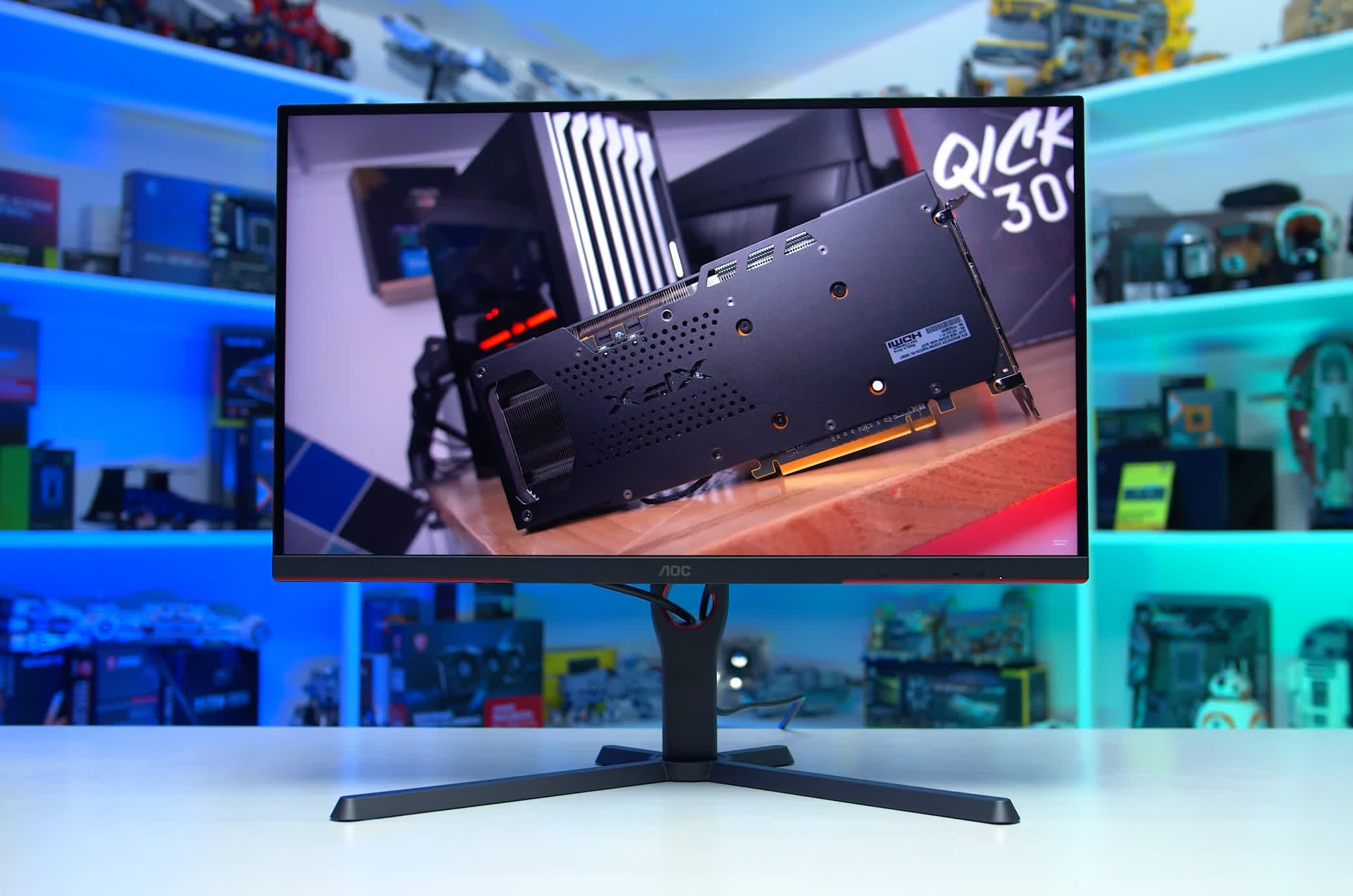
At around $300, we would buy the AOC Q27G3XMN. This is a 27-inch 1440p 180Hz VA LCD with a 336-zone mini-LED backlight, which delivers true, entry-level HDR performance. At just $280, it’s the most affordable way to experience proper HDR in games, and its image quality is quite impressive thanks to its decent number of zones and high peak brightness. It’s a much better HDR experience than you’d get from edge-lit dimmed DisplayHDR 400 monitors.
While its motion performance doesn’t match IPS LCD competitors, it’s on the better end of the VA scale and typically fine for gaming. It’s not the fastest monitor, but its speed isn’t a dealbreaker. It also boasts an excellent native contrast ratio. And did we mention it’s a proper HDR display for just $280? Availability can be an issue at times, but if you can find one, we recommend it.
$350
MSI G274QPX
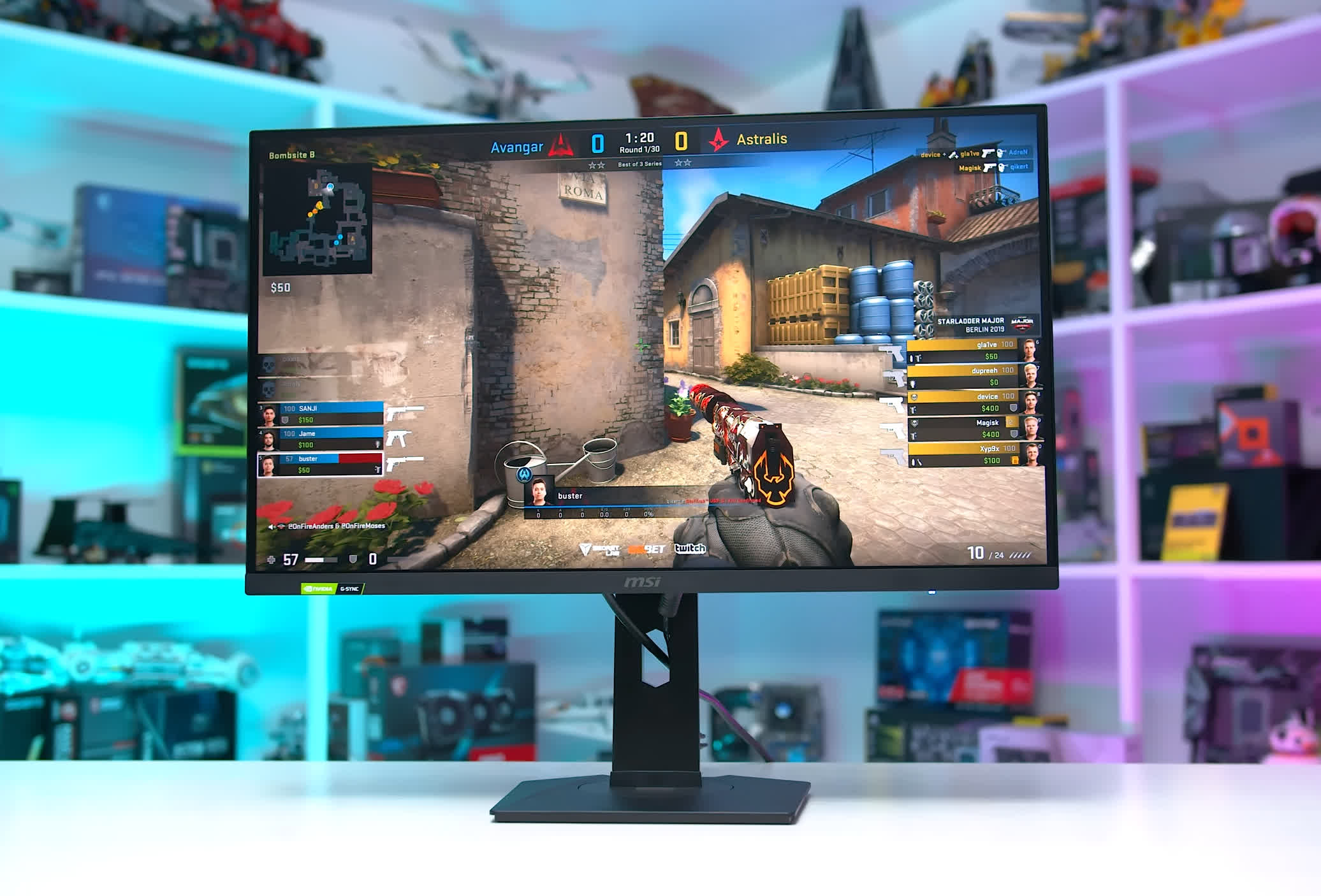
At $350, the available monitors are more of a sidegrade relative to the Q27G3XMN than an upgrade. What we generally recommend at this price point is either choosing the HDR-capable AOC model if you primarily play single-player games or opting for a 1440p 240Hz IPS display if you prefer multiplayer gaming.
This is where the 27-inch 1440p 240Hz IPS LCD in the MSI G274QPX comes in, and you can often find it for slightly under $350 if you’re lucky.
The G274QPX performs well, and with its higher refresh rate than the other models we’ve mentioned, it offers better motion clarity and lower input lag, making it a great choice for competitive gamers. It also functions well as a general 1440p monitor with a decent contrast ratio, high peak brightness, wide color gamut, and a good sRGB mode. There’s little reason to spend more on a 1440p 240Hz LCD in 2024.
$400
Gigabyte M27U

We recommend upgrading to a 4K gaming monitor at $400, specifically the Gigabyte M27U or its similar counterpart, the M28U, both available at this price. The M27U, which we’ll focus on, is a 27-inch 4K 160Hz IPS LCD that stands out as a classic all-rounder. It doesn’t have standout strengths that put it far above others, but it also avoids any deal-breaking flaws, performing well across all areas.
Motion performance is solid and typical of current-generation IPS LCD panels. It offers decent wide gamut coverage, reasonable factory calibration, great brightness, excellent viewing angles, and a high resolution. While its contrast ratio is a bit disappointing, if you’re looking for a good 4K LCD for a mix of gaming, work, or web browsing, the M27U is a fantastic choice.
$500
LG 32GR93U
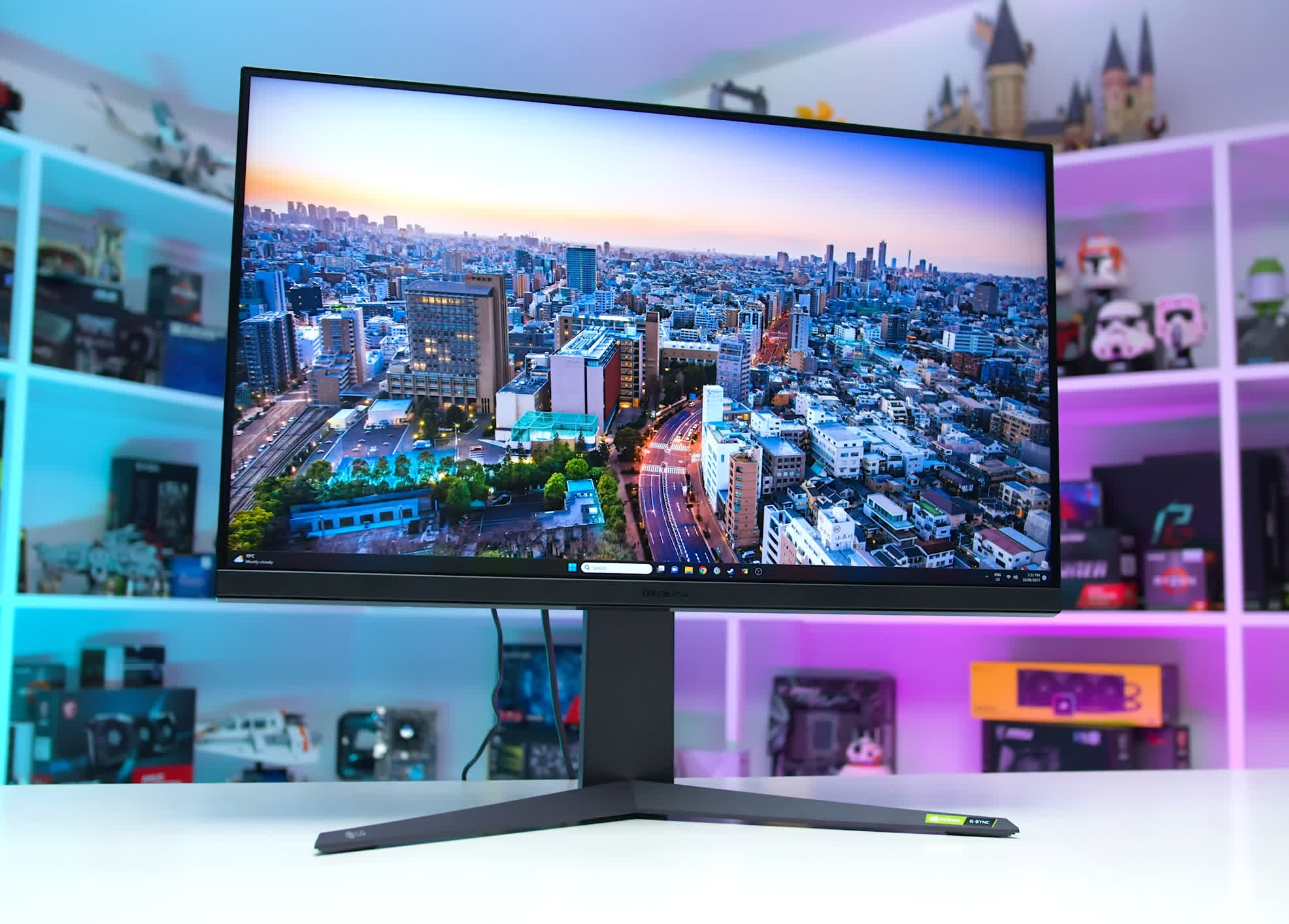
A larger 4K LCD gaming monitor becomes an excellent choice for $500, and we recommend the LG 32GR93U. While you can find some cheaper mini-LED LCDs at this price, we haven’t been overly impressed with the ones we’ve tested so far. Instead, we recommend something that excels in its core features, like the 32GR93U.
This 32-inch 4K 144Hz IPS LCD is typically priced around $520 and is one of the most affordable 32-inch 4K monitors on the market. Its larger size is ideal for this resolution, offering more screen real estate for gaming and productivity. The 32GR93U is another balanced option, with decent response times, hardware calibration support, good accuracy, and strong color space coverage.
$600
AOC AG276QZD

At $600, we’re now in OLED territory, and we recommend the AOC AG276QZD, which can occasionally be found for just under $600. This 27-inch 1440p 240Hz WOLED is a compelling choice, especially considering it was $800 when we reviewed it a year ago. If you’re looking for a great value entry point to OLED gaming, this is it.
The AG276QZD offers the usual OLED advantages, such as exceptional response time performance and per-pixel control, enabling a true HDR experience with excellent contrast and decent peak brightness. Its SDR performance is solid, motion clarity is outstanding, and the built-in sRGB mode is accurate.
While we weren’t the biggest fans of its build quality, at $600, almost a mid-range price in today’s market, this OLED panel delivers great value for gaming. Just be cautious about prolonged static content due to the risk of burn-in.
$700
Asus ROG Strix XG27AQDMG
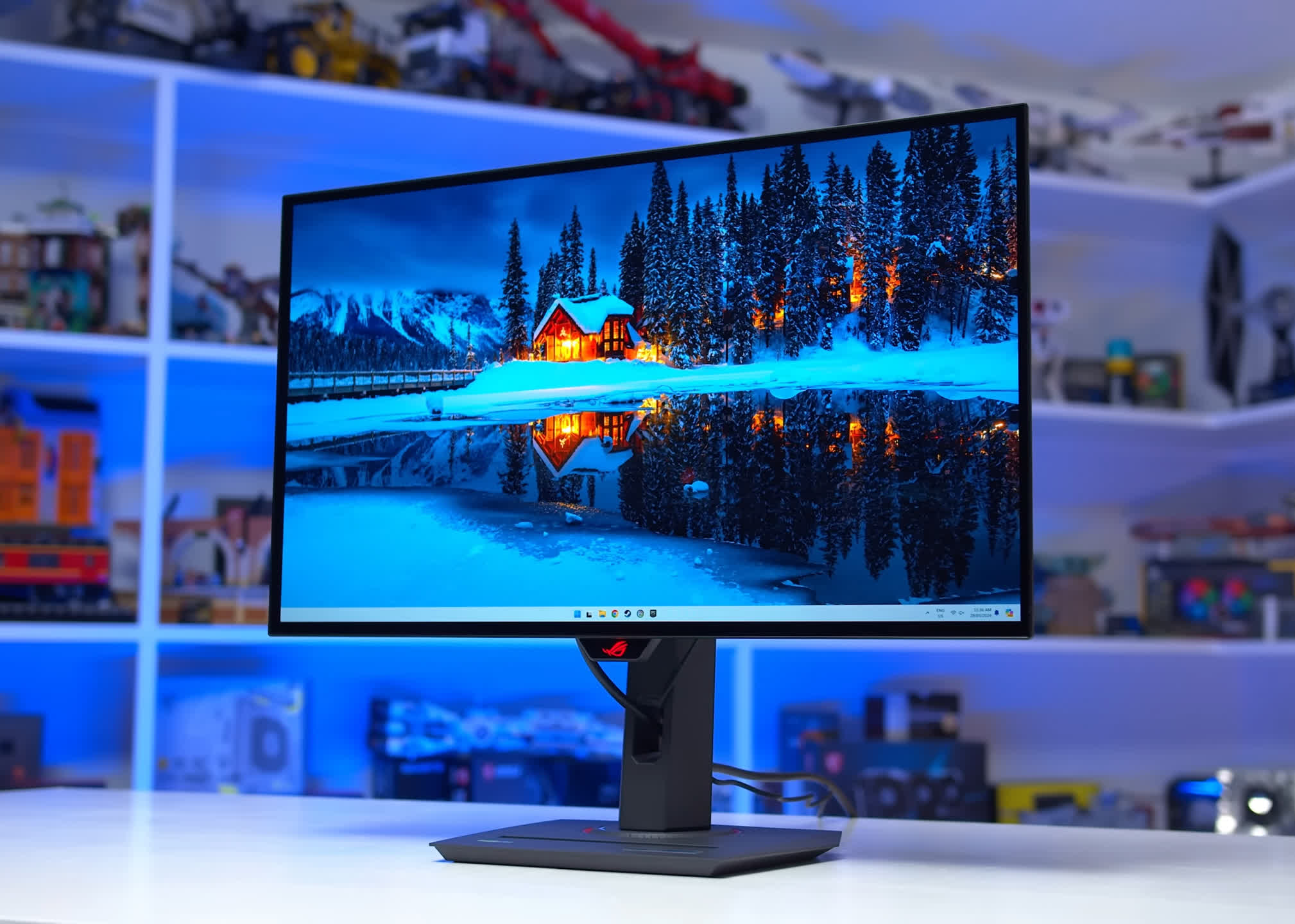
While the AG276QZD is a great budget OLED option, an even better choice in the $700 tier is the Asus ROG Strix XG27AQDMG, typically priced between $650 and $700. This 27-inch 1440p 240Hz WOLED boasts several advantages over the AOC model.
First, it features a glossy screen coating instead of matte, which works better in darker environments and is often preferred by buyers for its enhancement of apparent black levels. Additionally, it’s more accurate and brighter for HDR gaming, sometimes substantially so, providing more punch in real-world scenes.
It retains all the excellent OLED HDR qualities, such as ultra-fast response times and per-pixel control. This is one of our favorite 1440p monitors right now and a great buy at this price.
$800
Dell Alienware AW3423DWF

At $800, we recommend the Dell Alienware AW3423DWF, which remains a fantastic buy and, with some luck, can be found closer to $700. This 34-inch 3440×1440 165Hz QD-OLED offers exceptional value as a high-end OLED ultrawide. Like other OLEDs, it features per-pixel control, excellent HDR performance, and elite response times, complementing its 165Hz refresh rate. While not the fastest anymore, it’s still a great choice for immersive single-player experiences.
After a few firmware updates, this Alienware model stands out as one of the better-calibrated QD-OLEDs, delivering excellent brightness in both SDR and HDR modes. Even when compared to higher-refresh-rate competitors or newer WOLED models, we think the value for money here is hard to beat, and you’ll struggle to find a better ultrawide in this price range.
$900
MSI MAG 321UPX

A 32-inch 4K QD-OLED gaming monitor would be our top choice at the $900 price point. The leading contender here is the MSI MAG 321UPX. This is a close relative of the 321URX that we tested, but it’s available for $50 less at $900 flat thanks to the omission of a few USB ports and RGB LED lights.
In our opinion, 32-inch 4K 240Hz monitors like this are the best category on the market and offer the best experience for gamers. They are fast, have great HDR performance, a high resolution, a large screen size, and a great refresh rate. They can do it all, whether it’s single-player or multiplayer gaming.
$1,000
MSI MAG 321UPX / MPG 321URX
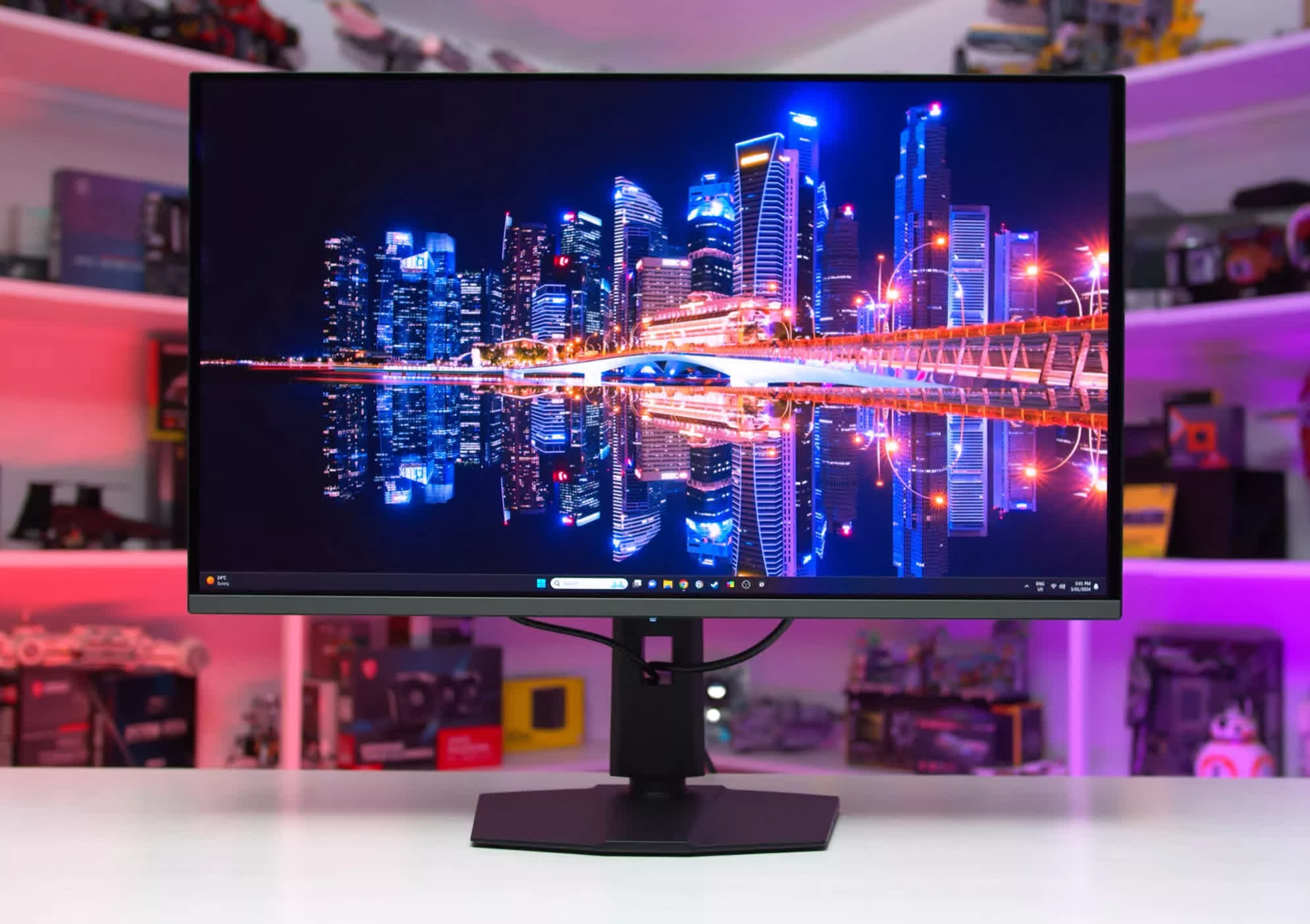
The 321URX, which we tested and also recommend in the $1,000 price range, left us very impressed with its calibration in both SDR and HDR modes. Brightness characteristics are strong, panel performance is excellent, and we think most people will be blown away by how good this monitor looks with the latest triple-A games. It also has a glossy finish, which works well in darker environments, though the QD-OLED panel structure isn’t ideal for brighter rooms. Text quality is also excellent thanks to improvements in this generation of OLED.
We’ve picked the MSI models in these two price categories because it’s really hard to separate most of the 4K OLEDs we’ve tested in terms of performance. So, the models that are typically cheaper get our approval. In this case, it’s the MSI models. Just be aware that if you’re planning to use one for occasional productivity work, there’s a risk of permanent burn-in.
$1,200
Asus ROG Swift PG32UCDM / PG32UCDP
The most expensive monitors we would strongly recommend right now are also 32-inch 4K 240Hz OLEDs. In the $1,200 – 1,300 range, you can get the best models that offer slight improvements. We believe the overall best to be the Asus ROG Swift PG32UCDM, but there’s also the PG32UCDP if you want something slightly different.
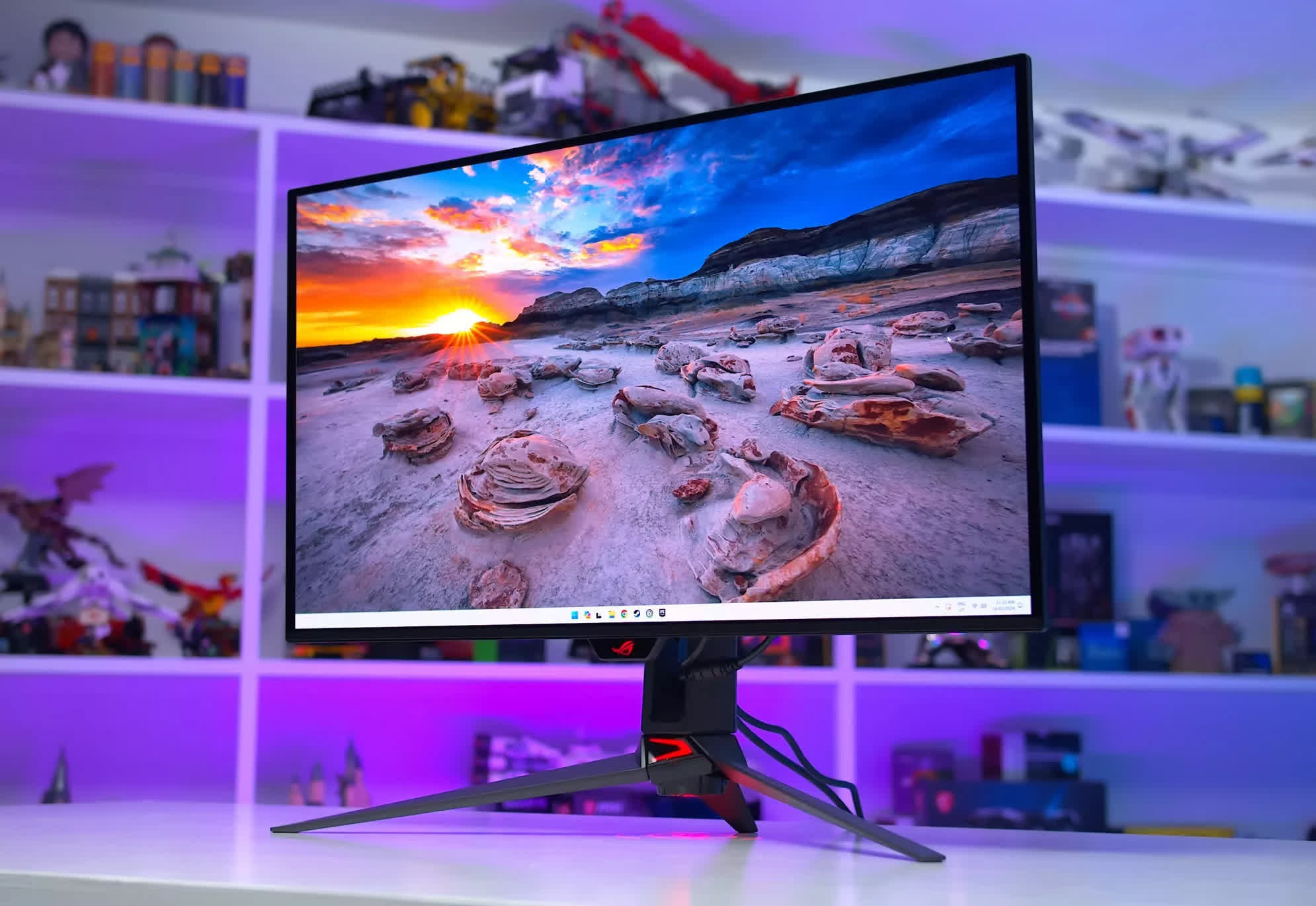
The PG32UCDM follows the same format as the MSI 321UPX and 321URX: a 32-inch 4K 240Hz QD-OLED. What sets the UCDM apart from the MSI models are its additional features, like ELMB black frame insertion and Dolby Vision support. It’s also slightly better calibrated and includes an unlocked sRGB mode. Most other performance areas are identical to the MSI variant, as they use the same panel. But if you like the idea of extra features and slightly better tuning, the Asus model is the top choice.

The PG32UCDP, on the other hand, offers a 32-inch 4K 240Hz WOLED with dual-mode 1080p 480Hz functionality. While we would personally prefer the PG32UCDM over the PG32UCDP, the UCDP is also a great option if you’re interested in dual-mode support. It’s similarly priced and sits at the top of the market among monitors we can reasonably recommend.
That’s not to say there aren’t more expensive monitors – because there are – but once you go above $1,300 – 1,400, it’s hard to recommend them. Most of the time, they aren’t any better for gaming than the options we’ve already mentioned. You can get top-end performance from these 4K OLEDs starting at $900. We’d hate for you to waste money on pricier products without a clear reason, so we won’t bother discussing anything higher in price.










